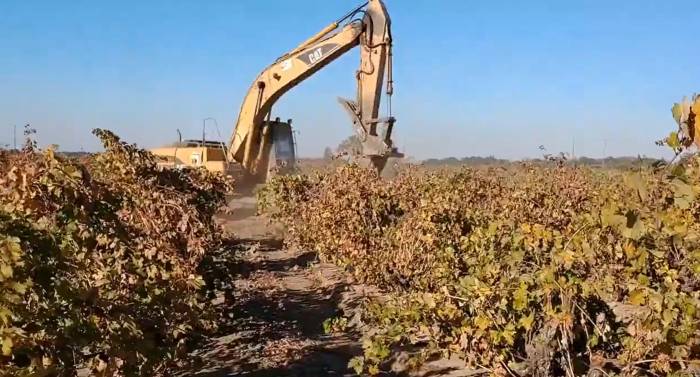California Uproots Thousands of Hectares of Vineyards as Wine Demand Slumps
Vineyard removals accelerate as rising costs and changing habits reshape the state’s wine industry, raising concerns for the future
2025-09-08

California’s wine industry is facing a difficult harvest season this year, despite favorable weather conditions. Across the state, growers and wineries are contending with a combination of oversupply, declining demand, and shifting consumer habits. As a result, thousands of acres of vineyards have been removed, and many more may follow.
At V. Sattui Winery in Saint Helena, Tom Davies is overseeing his 46th grape harvest. He says the challenges facing the industry are unlike anything he has seen before. “Following the pandemic, a lot of people raised their tasting prices. The prices of wine have increased. It’s expensive to make wine,” Davies said. Recent studies show that alcohol consumption in the United States has dropped to its lowest level in 90 years, contributing to a decrease in wine sales.
GROWERS ARE RIPPING OUT VINES: This is a 60-acre vineyard in #Lodi with #zinfandel grapes.
— Suzanne Phan (@SuzannePhan) September 7, 2025
An excavator was removing the vineyard in June “because there was no buyer for the grapes.” Courtesy: Lodi Wine Grape Commission @abc7newsbayarea #wine #vineyards #wineries #CA pic.twitter.com/z6K0lbkbnd
The oversupply of grapes is evident throughout California’s wine regions. Stuart Spencer, who works with the Lodi Wine Commission representing 85 wineries and 75 grape growers, says the problem is widespread. “Last year, there was probably an estimated 400-thousand tons left unharvested across California, and it will probably be that amount this year,” Spencer said.
In Lodi, black patches can be seen in some vineyards where grapes were left to rot on the vine last winter. Spencer describes the sight as painful for growers who invested time and resources into their crops. In recent years, about 20 percent of Lodi’s vineyards—roughly 20,000 acres—have been removed as growers look for alternative crops or simply leave land fallow.
Driving through Napa Valley, Davies notes that more vineyards are being pulled out than usual. Some are bulldozed and pushed into piles as owners consider what to plant next. The uncertainty is compounded by concerns over wildfires like the recent Pickett Fire, which threatened local crops. Davies had his grapes tested for smoke taint but believes his harvest was spared significant damage.
The cost of producing wine has risen steadily since the pandemic began. Many wineries increased tasting room prices to offset higher expenses for labor, materials, and transportation. At the same time, younger consumers are drinking less wine or choosing other beverages such as craft beer or spirits.
Davies warns that if too many vineyards are removed without replanting, California could face a shortage in future years if demand rebounds. “I caution other vintners: you think the sky is falling and you rip out stuff and you don’t replant—we can end up in a place under supplied years from now,” he said.
Despite these challenges, some see an opportunity for change within the industry. Davies believes this period could allow winemakers to experiment with new grape varieties or create experiences that appeal to younger generations of drinkers.
For now, California’s wine country is adjusting to a new reality marked by lower consumption and economic uncertainty. Growers and winemakers are watching closely as this year’s harvest unfolds, hoping for signs that the market will stabilize before more vineyards disappear from the landscape.
Founded in 2007, Vinetur® is a registered trademark of VGSC S.L. with a long history in the wine industry.
VGSC, S.L. with VAT number B70255591 is a spanish company legally registered in the Commercial Register of the city of Santiago de Compostela, with registration number: Bulletin 181, Reference 356049 in Volume 13, Page 107, Section 6, Sheet 45028, Entry 2.
Email: [email protected]
Headquarters and offices located in Vilagarcia de Arousa, Spain.